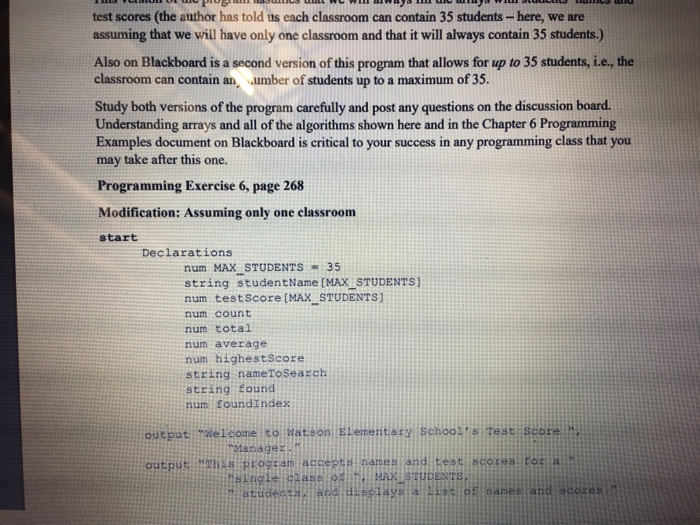Answered step by step
Verified Expert Solution
Question
1 Approved Answer
Only Pseudocode!!!! No Java or other languages This questions is dealing with Arrays from chapter 6 from programming logic and design book. A rental car
Only Pseudocode!!!! No Java or other languages
This questions is dealing with Arrays from chapter 6 from programming logic and design book.
A rental car company requires a car return program that allows works as follows:
a. Assumes a maximum of 500 rentals, i.e., it is possible to have fewer than 500
rentals, just not more than that number.
b. The program must allow an employee to enter:
i. The rental ID, e.g., EL101
ii. The beginning odometer reading noted on the rental contract
iii. The ending odometer reading from the car
iv. The base rental charge that the customer has paid when renting the vehicle
c. The program must allow the user to continuously enter this input, but allow
them to stop by entering ZZ999 for the rental ID.
d. For each customer, the program must calculate and output the additional
amount owed, if any, which is determined as follows:
i. All customers are allowed 500 miles as part of the base rental charge
ii. For up to 150 miles over the allowed 500, the customer has to pay an additional $2 per mile
iii. For any excess beyond 150 miles, the customer must pay $3 per mile
iv. A tax of 6.5% is applied on the calculated amount output the amount before tax, the dollar amount of the tax itself, and the total after tax
e. When the user stops data entry, the program must determine and output:
i. The most miles driven by a customer, and output that along with the rental ID
ii. The least miles driven and output that along with the rental ID
iii. The total additional amount collected from customers
iv. The average amount collected from customers
v. The total revenue from rentals, which would include both the base rental
charges and the additional amounts collected
f. The program must also allow the user to enter a rental ID, then search for that
ID and if it is found, display all information pertaining to that rental the ID,
odometer readings, base rental charge, additional amounts before and after tax,
and the tax itself, all in the correct order as you would expect to see on a bill or
statement
I posted some pics of examples of what the pseudocode looks like. The 1st 3 pics is same example.



The next pics is another example




Step by Step Solution
There are 3 Steps involved in it
Step: 1

Get Instant Access to Expert-Tailored Solutions
See step-by-step solutions with expert insights and AI powered tools for academic success
Step: 2

Step: 3

Ace Your Homework with AI
Get the answers you need in no time with our AI-driven, step-by-step assistance
Get Started


